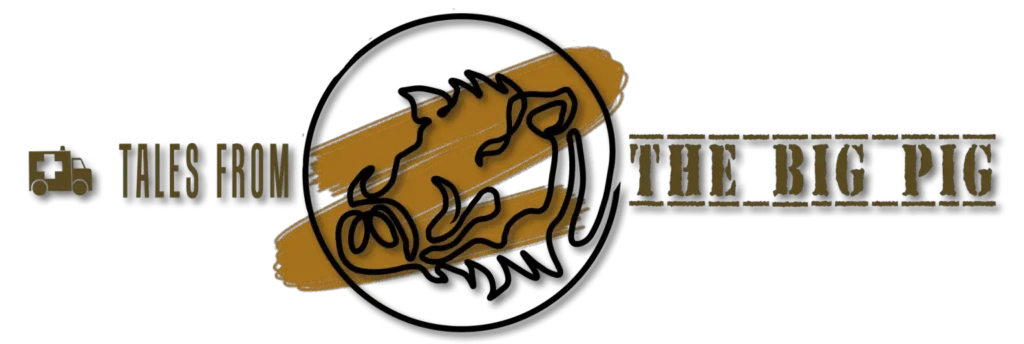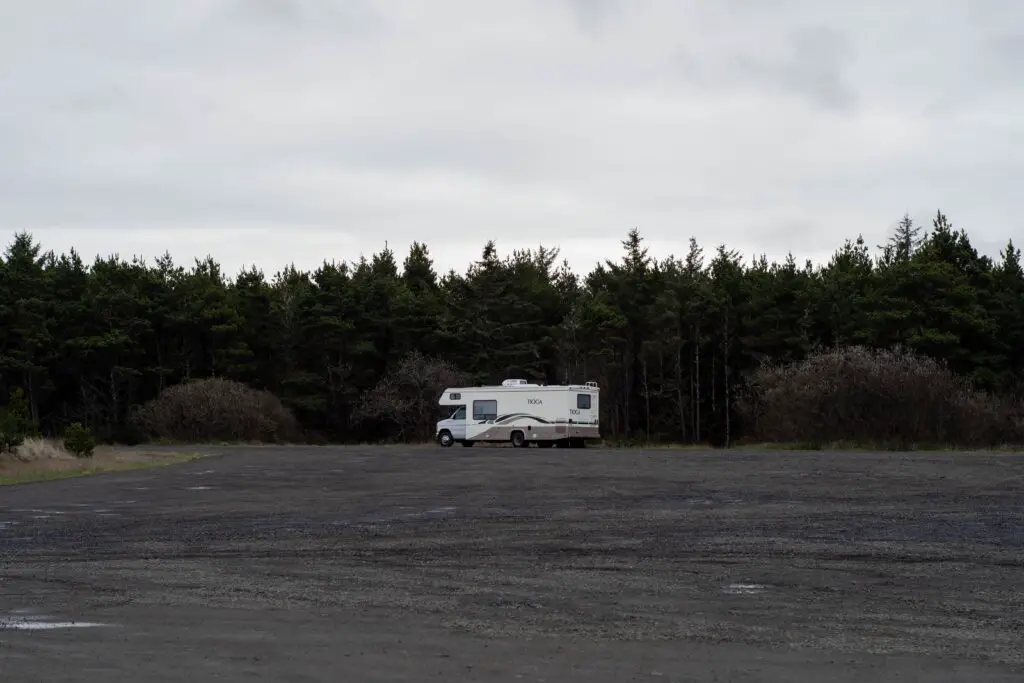Boondocking means traveling off the grid and involves living completely self-sufficiently and without relying on any major infrastructure or developed campgrounds.
Boondocking is sometimes called “wild camping” or “dry camping”, but those are not necessarily boondocking. Although both terms refer to camping without hookups, the term “boondocking” implies camping away from an RV park or developed campgrounds.
However, dry camping can occur at a developed campground without a water spigot, shore power, or sewer connections. This is often at state, provincial, or national parks.
There are many benefits to this type of camping this way, like being able to go where you want and spending more time outdoors. You’ll save money, reduce pollution, and live closer to nature.
Why is it called Boondocking?
Originally a Tagalog (Filipino) word, bundók, the boondocks means “mountain”. It used to refer to a remote rural area, but now it refers to a backward, unsophisticated site viewed by city dwellers as undeveloped. Overnight camping in these areas naturally becomes the definition of boondocking.
What Are Some Benefits Of Boondocking?
Boondocking has many advantages for travelers. One is that you can get away from the hustle and bustle of city life for a while, and enjoy some peace and quiet. Another benefit is that it’s cheaper than staying in a hotel or motel.
There are fewer expenses involved than if you were to stay at a hotel.
An advantage of not having a fixed residence is the increased freedom it provides.
- You’ll save money on gas since you won’t need to stop to fill up.
- You get to see more of nature.
- You’re free to explore new places.
- You’ll meet interesting people.
- You may even make friends.
- You won’t have to worry about finding a place to stay.
- You can travel farther without spending more money.
- Live Self-Sufficiently
- Spend more time outside
- Avoid Pollution
- Get closer to nature
But there are also drawbacks to boondocking. For example, inexperienced boondockers may not be able to do everything they have become accustomed to. You might need to rely on other people to help you out. You might miss power-grid-dependent amenities. Using solar panels and an inverter will allow the freedom of using household appliances without commercial electrical hookups.
Where can you boondock?
Off-the-beaten-path travelers should consider boondocking. In the United States, every public land management agency has it (with a few exceptions). Free camping and free parking are both types of boondocking. The term “free camping” refers to camping without paying any fees. There may, however, be restrictions on where you can camp. When you park for free, there are no fees, but if you stay overnight, there is a fee.
On your way from point A to point B, there are some stopover places that are known for allowing overnight stays. Cracker Barrel, Walmart, Camping World, and Cabella’s are examples of this.
A great site to find host locations to boondock is Boondockers Welcome. Over 3292 locations are available with NO camping fees. These can also include driveway camping and private land areas.
There are several places to find boondocking on federal lands. First, you can find it on BLM-managed lands. These include the Bureau of Land Management lands, National Forests, Grasslands, Wildlife Refuges, and State Parks. Second, you can find it within National Recreation Areas. Third, you can find it in National Monuments. Fourth, you can find it near military bases. And finally, you can find it at many state parks.
To find out whether boondocking is allowed on a particular piece of land, you should consult the Access Map. Most states have online versions of these maps available. Some states also have downloadable PDFs available.
For more information about boondocking, visit the U.S. Forest Service website. To find boondocking locations, use the following resources:
- FreeRoam.com – A free website that lists thousands of boondocks throughout the country.
- Campendium.com – Another free website that lists thousands of boondocks nationwide.
- FreeCampsites.net – A paid website that lists thousands of sites nationwide.
- Google Earth – Allows you to search for boondocking sites near your location.
- United States Forest Service Website – All national forests and grasslands have their own websites. They often include information about boondocking.
- National Park Service Website – Many national parks have their own websites. Often, they include information about boondocks.
- BLM Website – All BLM-managed lands have their own websites. Sometimes, they include information about how to boondock.
- BackCountryCamping.org – This website includes a section called “Boondocking FAQs”. It answers questions about boondocking.
Is Boondocking Illegal?
There are defined areas where boondocking is legal. Those include areas managed by the U.S. Bureau of Land Management, the U.S. Forest Service, and the Department of Fish and Wildlife. Rest stops usually allow RV parking for up to 12 hours, but you can’t park an RV overnight on a highway or road. Be aware of “No Overnight Parking” signs on the street.
You’ll find boondocking locations throughout America, including national parks, state forests, and Bureau of Land Management lands. These sites are typically located near water sources and away from developed areas.
You may not realize that there are certain places where boondocking isn’t legal. Designated dispersed camping is becoming more common, especially in National Parks and State Forests. This means that you must be at a specified campsite to spend the evening.
Make sure you check the rules and regulations before setting up camp. Many states require permits for overnight stays, and some require reservations. Also, be aware that the length of time you’re allowed to stay varies depending on the location.
If you want to camp without paying for a campsite, check out some of the dispersed camping areas before deciding where to go. Make sure to contact local authorities first so they know when you’re coming.
What Do I Need To Boondock?
Since this site is about my ambulance conversion camper, I will assume you will be using a Recreational Vehicle for boondocking.
These are merely suggestions for items you might want along with you on your boondocking trip, so consider it a checklist.
Water
- Fresh water tanks or water jugs
- Black water tanks (if you are not using a composting toilet)
- Water filter
- Gray tank
Food
- A healthy supply of meals (non-perishable if no refrigeration is available)
- Paper Plates and Cups if no dishwashing is possible
- Snacks
- Grill or portable stove
- Pots and Pans
Energy
- Solar Power would be nice, but a Battery Bank storage device or some other reliable power source would suffice.
- Charging power cables for electronic devices
- Propane and gas tanks
- Generator if possible
Miscellaneous
- Cellular Booster in case of weak cell service
- Battery powered fans
- Space heater (in case of inclement weather)
- Flashlights and LED lights
For an in-depth discussion of Boondocking tips, check out boondockersbible.com.
Dispersed Camping Locations
American boondocking spots are plentiful. Some of the most popular spots include national forests, BLM lands, state parks, and wildlife refuges. There are also plenty of private properties that allow dispersed camping.
You’ll find a durable surface to camp out on at most sites, but no facilities may be available. You’ll also find no water or electricity, making it difficult to stay hydrated and charge devices.
Make sure to abide by the Leave No Trace principles when you decide to boondock. Good campsites are located, not created. Follow the guidelines below to keep yourself and others safe during your trip.
Can I boondock at campgrounds or state parks?
Most states and federal government agencies prohibit boondocking within park boundaries. However, there are several exceptions. State parks and national forests allow boondocking. Included are those managed by
- The Bureau of Land Management (BLM)
- U.S. Forest Service (USFS)
- U.S. Fish & Wildlife Service (FWS)
These agencies typically define dispersed camping areas where boondocking is allowed.
The national forests and some state parks also allow boondocking within the boundaries of certain wilderness areas. Wilderness areas are usually large tracts of protected from development land. You’ll find wilderness areas throughout the country. They include national parks, monuments, wildlife refuges, seashores, lakeshores, forests, grasslands, and preserves.
You may be able to boondock in a wilderness area if you stay within the boundaries of the wilderness area. Many wilderness areas require you to obtain a permit before entering the wilderness area. Contact the appropriate agency for more information.
Finally
It would be best to try boondocking in a campsite with all of the amenities to gain camping experience before trying this for real. It will allow you to prepare for your boondocking adventure and the written lists that you can make will guarantee you have thought of everything. Preparation for your camping trip is everything!


